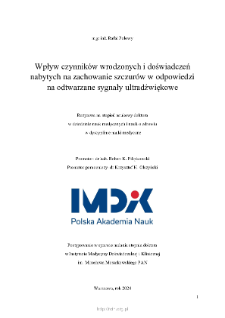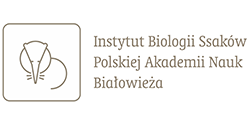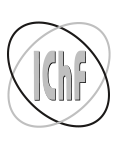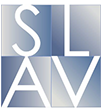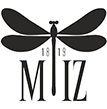- Search in all Repository
- Literature and maps
- Archeology
- Mills database
- Natural sciences
Advanced search
Advanced search
Advanced search
Advanced search
Advanced search

Object
Title: Wpływ czynników wrodzonych i doświadczeń nabytych na zachowanie szczurów w odpowiedzi na odtwarzane sygnały ultradźwiękowe
Institutional creator:
Instytut Medycyny Doświadczalnej i Klinicznej im. M. Mossakowskiego PAN
Contributor:
Filipkowski, Robert K. (Promotor) ; Olszyński, Krzysztof H. (Promotor pomocniczy)
Publisher:
Instyytut Medycyny Doświadczalanej i Klinicznej im. M. Mossakowskiego PAN
Place of publishing:
Degree name:
Level of degree:
Degree discipline :
Degree grantor:
Instytut Medycyny Doświadczalnej i Klinicznej im. M. Mossakowskiego PAN
Type of object:
Abstract:
Rats communicate using ultrasonic vocalizations (USV). Based on the frequency range they occupy, two main types of rat ultrasounds have been distinguished: 50-kHz USV and 22-kHz USV. It has also been shown that appetitive stimuli induce 50-kHz USV, while aversive stimuli, such as pain, elicit 22-kHz USV. In our laboratory, it was demonstrated that exposure of rats to both types of USV (playback) triggers distinct behavioral responses. In addition to this procedure, the doctoral dissertation utilized fear conditioning (FC), which is based on associating electric shocks with neutral conditioned stimuli. Recently, it has been shown that the spontaneously hypertensive rat (SHR) strain exhibits behaviors similar to symptoms and deficits observed in schizophrenia, a disorder in which multiple speech-related impairments occur. This study examined the behavior of Wistar rats and SHR subjected to the FC procedure using 1, 6, or 10 painful stimuli. They were then exposed to 50- and 22-kHz USV playback in a cage similar to their home cage. It was hypothesized that prior exposure to painful stimuli would result in different behavioral responses in the rats and that SHR would differ from Wistar rats in their USV responses. Wistar rats that received 6 or 10 painful stimuli showed greater changes in locomotor activity and emitted more USV in response to USV playback than control groups. In contrast, SHR emitted significantly fewer USV than Wistar rats, and no FC effect on playback response was observed in these animals. Finally, the effect of the antipsychotic drug haloperidol on USV emission in SHR was examined. Haloperidol administration increased the number of USV emitted in response to 50-kHz USV playback. These findings indicate the potential use of USV in studying disorders associated with social communication deficits.
Detailed Resource Type:
Format:
Resource Identifier:
Source:
IMDIK PAN, sygn. ZS 440 ; click here to follow the link
Language:
Language of abstract:
Rights:
Creative Commons Attribution BY 4.0 license
Terms of use:
Copyright-protected material. [CC BY 4.0] May be used within the scope specified in Creative Commons Attribution BY 4.0 license, full text available at: ; -
Digitizing institution:
Mossakowski Medical Research Institute PAS
Original in:
Library of the Mossakowski Medical Research Institute PAS
Access:
Object collections:
- Digital Repository of Scientific Institutes > Partners' collections > Mossakowski Medical Research Institute PAS > Theses > Ph.D Dissertationes
- Digital Repository of Scientific Institutes > Literature > Thesis
Last modified:
Feb 6, 2025
In our library since:
Jan 27, 2025
Number of object content downloads / hits:
8
All available object's versions:
https://rcin.org.pl./publication/281027
Show description in RDF format:
Show description in RDFa format:
Show description in OAI-PMH format:
Objects Similar
Matłoka, Mikołaj
Michalczuk, Jerzy Michalczuk, Monika
Osiejuk, Tomasz S. Kuczyński, Lechosław
Schmidt, Veronika (1973– ) Schaefer, Heinrich Martin Leisler, Bernd
Żynis, Bernadetta

 INSTYTUT ARCHEOLOGII I ETNOLOGII POLSKIEJ AKADEMII NAUK
INSTYTUT ARCHEOLOGII I ETNOLOGII POLSKIEJ AKADEMII NAUK
 INSTYTUT BADAŃ LITERACKICH POLSKIEJ AKADEMII NAUK
INSTYTUT BADAŃ LITERACKICH POLSKIEJ AKADEMII NAUK
 INSTYTUT BADAWCZY LEŚNICTWA
INSTYTUT BADAWCZY LEŚNICTWA
 INSTYTUT BIOLOGII DOŚWIADCZALNEJ IM. MARCELEGO NENCKIEGO POLSKIEJ AKADEMII NAUK
INSTYTUT BIOLOGII DOŚWIADCZALNEJ IM. MARCELEGO NENCKIEGO POLSKIEJ AKADEMII NAUK
 INSTYTUT BIOLOGII SSAKÓW POLSKIEJ AKADEMII NAUK
INSTYTUT BIOLOGII SSAKÓW POLSKIEJ AKADEMII NAUK
 INSTYTUT CHEMII FIZYCZNEJ PAN
INSTYTUT CHEMII FIZYCZNEJ PAN
 INSTYTUT CHEMII ORGANICZNEJ PAN
INSTYTUT CHEMII ORGANICZNEJ PAN
 INSTYTUT FILOZOFII I SOCJOLOGII PAN
INSTYTUT FILOZOFII I SOCJOLOGII PAN
 INSTYTUT GEOGRAFII I PRZESTRZENNEGO ZAGOSPODAROWANIA PAN
INSTYTUT GEOGRAFII I PRZESTRZENNEGO ZAGOSPODAROWANIA PAN
 INSTYTUT HISTORII im. TADEUSZA MANTEUFFLA POLSKIEJ AKADEMII NAUK
INSTYTUT HISTORII im. TADEUSZA MANTEUFFLA POLSKIEJ AKADEMII NAUK
 INSTYTUT JĘZYKA POLSKIEGO POLSKIEJ AKADEMII NAUK
INSTYTUT JĘZYKA POLSKIEGO POLSKIEJ AKADEMII NAUK
 INSTYTUT MATEMATYCZNY PAN
INSTYTUT MATEMATYCZNY PAN
 INSTYTUT MEDYCYNY DOŚWIADCZALNEJ I KLINICZNEJ IM.MIROSŁAWA MOSSAKOWSKIEGO POLSKIEJ AKADEMII NAUK
INSTYTUT MEDYCYNY DOŚWIADCZALNEJ I KLINICZNEJ IM.MIROSŁAWA MOSSAKOWSKIEGO POLSKIEJ AKADEMII NAUK
 INSTYTUT PODSTAWOWYCH PROBLEMÓW TECHNIKI PAN
INSTYTUT PODSTAWOWYCH PROBLEMÓW TECHNIKI PAN
 INSTYTUT SLAWISTYKI PAN
INSTYTUT SLAWISTYKI PAN
 SIEĆ BADAWCZA ŁUKASIEWICZ - INSTYTUT TECHNOLOGII MATERIAŁÓW ELEKTRONICZNYCH
SIEĆ BADAWCZA ŁUKASIEWICZ - INSTYTUT TECHNOLOGII MATERIAŁÓW ELEKTRONICZNYCH
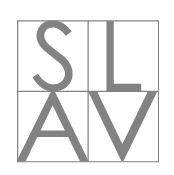 MUZEUM I INSTYTUT ZOOLOGII POLSKIEJ AKADEMII NAUK
MUZEUM I INSTYTUT ZOOLOGII POLSKIEJ AKADEMII NAUK
 INSTYTUT BADAŃ SYSTEMOWYCH PAN
INSTYTUT BADAŃ SYSTEMOWYCH PAN
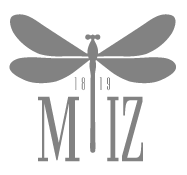 INSTYTUT BOTANIKI IM. WŁADYSŁAWA SZAFERA POLSKIEJ AKADEMII NAUK
INSTYTUT BOTANIKI IM. WŁADYSŁAWA SZAFERA POLSKIEJ AKADEMII NAUK
